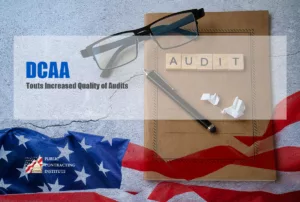DCAA Touts Increased Quality of Audits by Darrell Oyer, Darrell J. Oyer & Company:
A canned DCAA presentation contends that the quality of audits has improved as evidence by the fact that in FY2003 DCAA examined $265b and questioned only $8b (3%); but in FY2011 DCAA examined only $128b but questioned $12b (9%). So they are doing less but doing a better job!
Don’t you believe it! As most people will tell you, DCAA is questioning more costs, not because of better work, but because of a more outrageous questioning of costs. For example, I have had one situation where DCAA would take credit for over $4m in corporate allocations but never did an audit—they merely rejected the entire allocation based on the wording in the company’s annual report. In another instance, DCAA questioned $2m based on the position that direct labor should not be included in the contractor’s G&A base. And then there are many dollars of compensation questioned that will not stand up based on recent ASBCA rulings.
The test of quality is the percentage of cost questioned sustained—as was the agency metric in 1981. Now, the DCAA annual report no longer even mentions such a metric.



